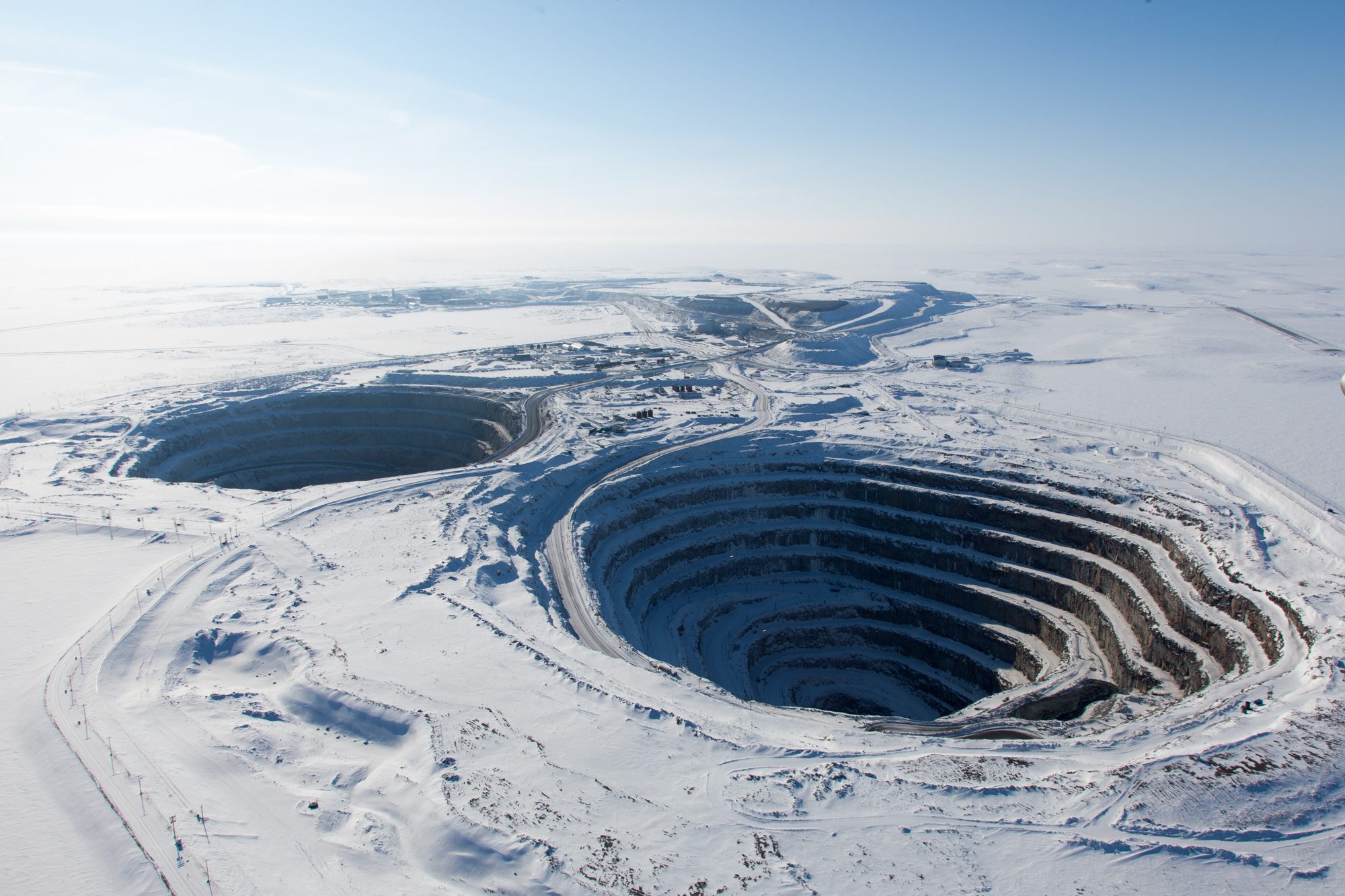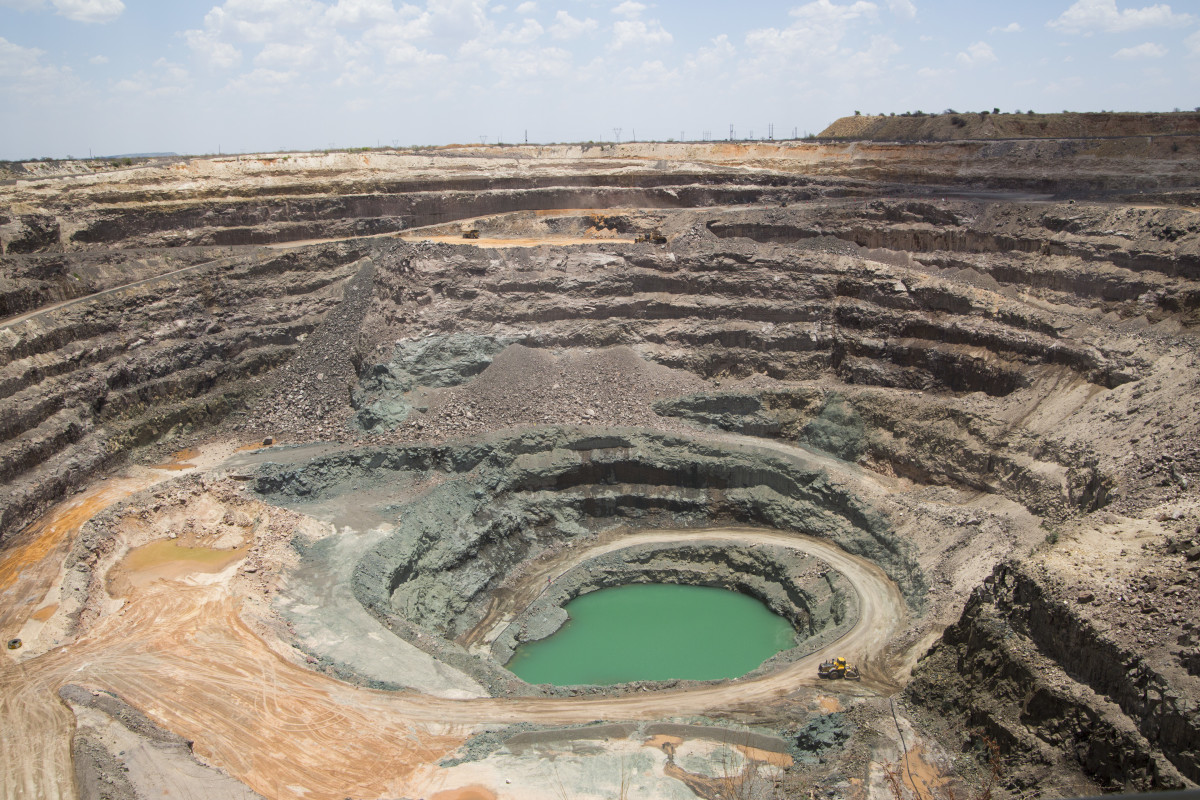Diamond Pit Characteristics and Origins

Diamonds pit – Diamond pits are unique geological formations created by the Earth’s natural processes over millions of years. They are characterized by their distinct shape, size, and depth, and are often associated with the presence of diamonds and other valuable minerals.
Beneath the veil of twilight, the diamond pit whispered secrets of wealth and ruin. Like a celestial river, a channel of hope flowed through the depths, carrying fortunes and despair in its currents. The diamonds, once buried deep in the earth’s embrace, now lay scattered in the pit, a testament to the relentless pursuit of desire and the enigmatic nature of destiny.
The formation of diamond pits begins with the presence of a diamond-bearing rock called kimberlite. Kimberlite is an igneous rock that forms deep within the Earth’s mantle and is brought to the surface through volcanic eruptions. As the kimberlite rises, it carries with it diamonds and other minerals that have crystallized within its matrix.
The diamonds pit is a dark and dangerous place, where greed and desperation collide. Like the rabbit holes in the nyt mini , it’s a world of hidden depths and unexpected dangers. But beneath the surface of the pit, there’s also a glimmer of hope – the promise of a fortune beyond imagination.
When the kimberlite reaches the surface, it often forms a volcanic pipe or diatreme. Over time, the softer kimberlite erodes away, leaving behind a depression or pit that is filled with a mixture of diamonds, other minerals, and volcanic debris.
The diamonds pit, a chasm of glittering desire, where fortunes are made and lost in the blink of an eye. Yet, there exists a parallel realm, a “tomorrow pit,” where the allure of the future eclipses the riches of the present.
Like a beacon in the darkness, the tomorrow pit beckons us to embrace the unknown, to delve into the uncharted territories of our dreams. And so, the diamonds pit, once a symbol of avarice and ambition, becomes a reminder of the endless possibilities that lie ahead, a testament to the enduring power of human aspiration.
Factors Influencing Diamond Pit Characteristics
The size, shape, and depth of diamond pits are influenced by several factors, including the size and composition of the kimberlite pipe, the surrounding rock formations, and the erosional processes that have occurred over time.
The diamonds pit, a gaping maw in the earth, swallowed countless lives in its insatiable hunger. But even as the miners toiled in darkness, a lifeline stretched from their subterranean abyss to the wider world. Through nyt connections , news and knowledge seeped into the pit, offering a flicker of hope amidst the oppressive gloom.
The diamonds pit became a microcosm of humanity’s indomitable spirit, where even in the most desolate of places, connections could bloom.
- Size: The size of a diamond pit is determined by the size of the kimberlite pipe that formed it. Larger kimberlite pipes produce larger diamond pits.
- Shape: The shape of a diamond pit is influenced by the surrounding rock formations and the erosional processes that have occurred. Pits can be circular, elliptical, or irregular in shape.
- Depth: The depth of a diamond pit is determined by the depth of the kimberlite pipe and the amount of erosion that has occurred. Pits can range in depth from a few meters to hundreds of meters.
Associated Rocks and Minerals
Diamond pits are often associated with a variety of rocks and minerals, including:
- Kimberlite: The primary rock associated with diamond pits is kimberlite, which is an igneous rock that contains diamonds and other minerals.
- Peridotite: Peridotite is a type of igneous rock that is often found in association with kimberlite pipes. It is composed primarily of olivine and pyroxene minerals.
- Eclogite: Eclogite is a type of metamorphic rock that is often found in association with diamond pits. It is composed primarily of garnet and omphacite minerals.
- Garnet: Garnet is a common mineral found in diamond pits. It is a hard, red mineral that is often used in jewelry.
- Ilmenite: Ilmenite is a common mineral found in diamond pits. It is a black mineral that is used in the production of titanium.
Diamond Pit Mining Techniques

The extraction of diamonds from diamond pits involves various mining methods, each with its own advantages and disadvantages, as well as environmental implications.
Open-Pit Mining
- Involves excavating a large, open pit from which diamond-bearing rock is extracted.
- Advantages:
- Allows for large-scale extraction, resulting in high diamond yield.
- Relatively low operating costs compared to other methods.
- Disadvantages:
- Can be disruptive to the surrounding environment, requiring extensive land clearing and waste disposal.
- May leave behind large, unsightly pits that can become hazardous.
Alluvial Mining
- Employs the natural process of water erosion to concentrate diamonds in riverbeds or other alluvial deposits.
- Advantages:
- Less environmentally disruptive than open-pit mining, as it does not require large-scale excavation.
- Can be done on a smaller scale, making it more accessible to artisanal miners.
- Disadvantages:
- Yields are typically lower than open-pit mining, as diamonds are more dispersed.
- Can lead to riverbed degradation and sedimentation, affecting aquatic ecosystems.
Kimberlite Pipe Mining, Diamonds pit
- Involves extracting diamonds from vertical or near-vertical pipes of kimberlite, the volcanic rock that contains diamonds.
- Advantages:
- Can yield high-quality diamonds, as kimberlite pipes are the primary source of diamonds.
- Less disruptive to the surface environment than open-pit mining, as it requires only a small surface area for extraction.
- Disadvantages:
- Requires specialized equipment and expertise for deep drilling and excavation.
- Can be expensive and time-consuming, as kimberlite pipes are often deep and narrow.
Environmental Impact of Diamond Pit Mining
Diamond pit mining, regardless of the method used, can have significant environmental impacts, including:
- Habitat destruction and fragmentation due to land clearing and excavation.
- Water pollution from mine waste and chemicals used in processing.
- Air pollution from dust and emissions from mining equipment.
- Greenhouse gas emissions from energy consumption and transportation.
- Social and economic disruption to local communities, particularly in areas where mining is the primary source of income.
To mitigate these impacts, sustainable mining practices, such as land reclamation, water management, and responsible waste disposal, are essential.
Diamond Pit Production and Distribution: Diamonds Pit
:max_bytes(150000):strip_icc()/mineshaft-at-the-big-hole-463515161-5a8320acc064710037c43ed2.jpg)
Diamond pits are a major source of diamonds, and their production has a significant impact on the global diamond market. In 2021, diamond pits accounted for approximately 25% of the world’s total diamond production, with an estimated output of 100 million carats. The largest diamond-producing countries by pit mining are Russia, Botswana, and Canada.
Factors Influencing the Price of Diamonds
The price of diamonds is influenced by several factors, including:
- Carat weight: The weight of a diamond in carats is a major determinant of its price.
- Clarity: The clarity of a diamond refers to the number and size of inclusions (imperfections) present. Diamonds with fewer inclusions are more valuable.
- Color: The color of a diamond is graded on a scale from D (colorless) to Z (yellow or brown). Colorless diamonds are the most valuable.
- Cut: The cut of a diamond refers to the way it has been shaped and polished. A well-cut diamond will maximize its brilliance and fire.
- Shape: The shape of a diamond can also affect its price. Round diamonds are the most popular and therefore the most expensive.
Distribution Channels for Diamonds from Diamond Pits
Diamonds from diamond pits are typically sold to diamond cutters and polishers, who then sell the finished diamonds to jewelry manufacturers and retailers. The distribution channels for diamonds from diamond pits can be complex and involve multiple intermediaries. However, the main distribution channels are as follows:
- Direct sales: Some diamond miners sell their diamonds directly to diamond cutters and polishers.
- Auctions: Diamonds can also be sold through auctions, which are typically held by diamond exchanges.
- Agents: Diamond miners may also use agents to sell their diamonds on their behalf.
- Retailers: Some diamond miners also sell their diamonds directly to retailers, such as jewelry stores.
In the diamond pits, the sun beat down relentlessly, turning the earth into a furnace. Miners toiled under the scorching heat, their bodies slick with sweat. They yearned for something to shield them from the relentless rays, something like the umbrella that provided shelter from the rain.
But in this desolate place, umbrellas were a distant dream, a symbol of protection that seemed forever out of reach.